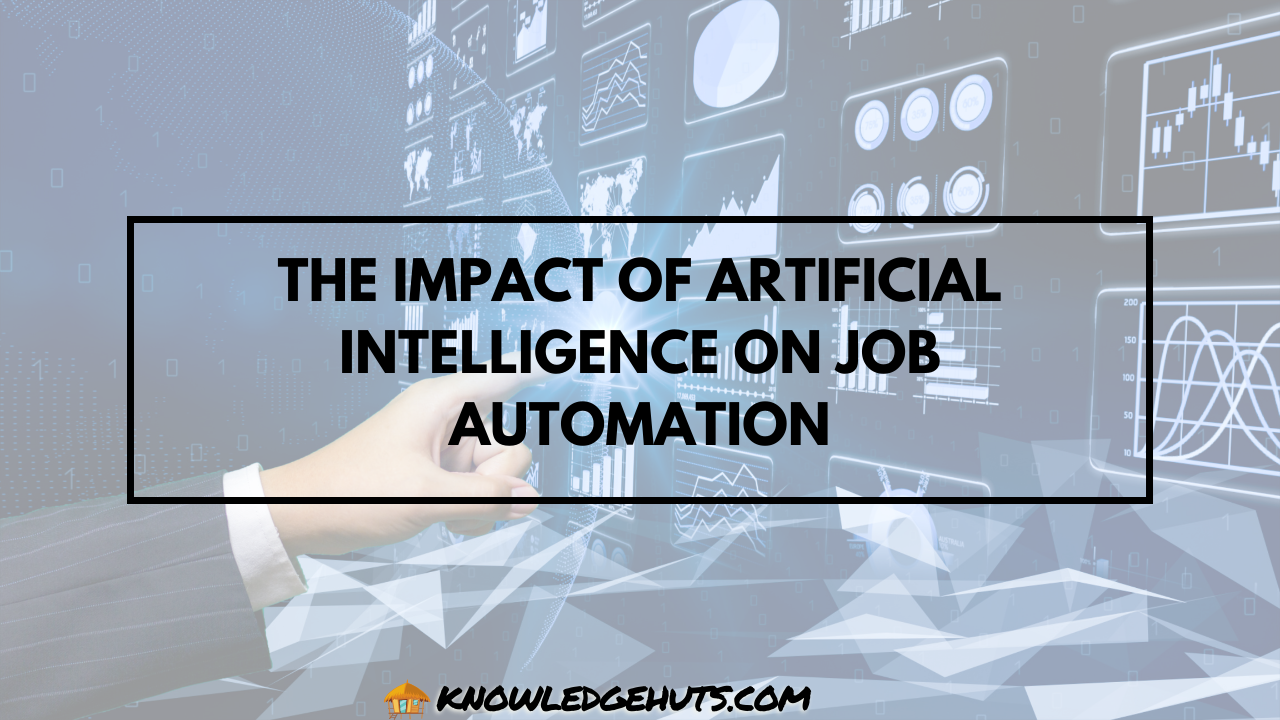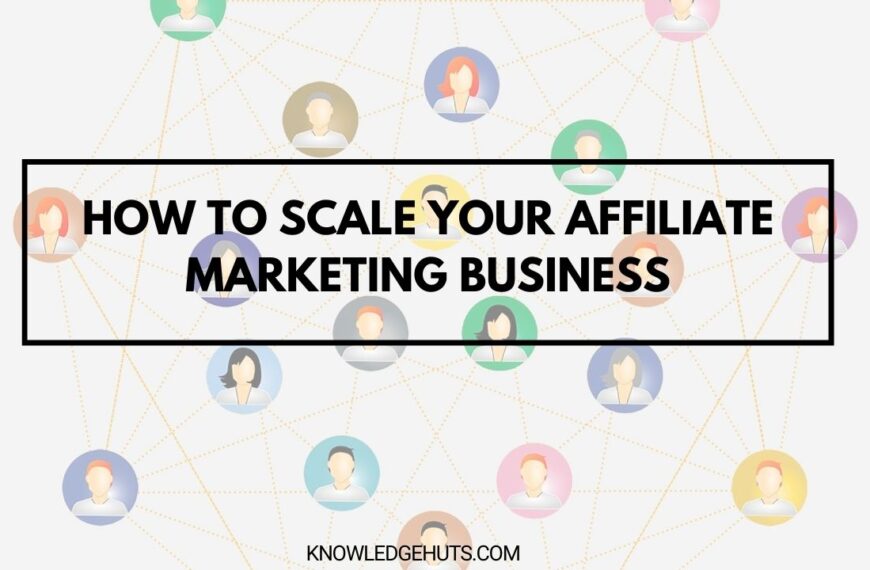Artificial Intelligence (AI) is transforming industries at an unprecedented rate, and one of the most profound areas of change is in job automation. AI technologies have been advancing rapidly, allowing businesses to automate tasks that were once thought to be the exclusive domain of human workers. From factories to offices, AI is reshaping how work is done, offering potential efficiency gains and cost reductions, but also raising concerns about job displacement and the future of the workforce.
This blog post explores the various ways Artificial Intelligence on Job Automation, the benefits and challenges associated with this shift, and how businesses and workers can adapt to this new era. We’ll dive into key trends, use cases, and offer insights into the future of jobs in an AI-driven world.
Understanding Job Automation Through AI
Job automation refers to the use of technology to perform tasks that would otherwise require human labor. With AI, machines can learn from data, make decisions, and perform complex tasks autonomously. Unlike traditional automation, which relies on pre-programmed instructions, AI allows machines to adapt, learn, and improve over time. This makes AI-powered automation more versatile and capable of handling a wide range of tasks.
How AI Differs from Traditional Automation
Traditional automation involves machines or software following a predefined set of rules to perform repetitive tasks. These systems are effective for simple, repetitive tasks that do not require decision-making or adaptability. Examples include manufacturing assembly lines or basic data entry processes.
In contrast, AI-powered automation involves machines that can learn from data, identify patterns, and make decisions based on real-time information. AI can handle tasks that involve problem-solving, customer interactions, or data analysis, and it can improve its performance over time through machine learning.
To truly understand how AI tackles complex challenges, a machine learning course can provide insight into the algorithms and techniques behind these smart problem-solving systems.
Table: Key Differences Between Traditional Automation and AI Automation
| Feature | Traditional Automation | AI-Powered Automation |
|---|---|---|
| Task Complexity | Handles simple, repetitive tasks | Handles complex tasks requiring decision-making |
| Flexibility | Limited to predefined rules | Adapts and learns over time |
| Learning Ability | Cannot learn or improve | Improves with experience (machine learning) |
| Example Applications | Assembly lines, data entry | Chatbots, fraud detection, autonomous vehicles |
The Benefits of AI-Driven Job Automation
The benefits of AI-driven job automation are significant, particularly for businesses looking to streamline operations, reduce costs, and improve accuracy. By automating tasks that were once handled by humans, AI allows organizations to focus on innovation, customer service, and more strategic initiatives.
1. Increased Efficiency and Productivity
AI can automate routine tasks that would otherwise consume valuable human resources. For example, AI can handle data entry, scheduling, and customer service queries with speed and precision, freeing up human workers to focus on higher-value tasks. This leads to greater overall efficiency and productivity across the organization.
2. Cost Savings
By automating tasks, businesses can reduce the need for large workforces, cutting labor costs. AI-powered systems, once implemented, can run 24/7 without fatigue or errors, significantly reducing operational expenses. For example, a customer service AI chatbot can handle thousands of queries simultaneously, reducing the need for a large call center staff.
3. Improved Accuracy and Quality
AI systems excel at performing repetitive tasks with a high degree of accuracy. Unlike humans, AI doesn’t suffer from fatigue or make mistakes due to inattention. This makes AI ideal for tasks that require precision, such as data analysis, quality control in manufacturing, or financial forecasting. The result is fewer errors and higher-quality outcomes.
Table: Benefits of AI-Powered Job Automation
| Benefit | Description |
|---|---|
| Increased Efficiency | AI automates repetitive tasks, freeing up human workers for more strategic roles. |
| Cost Savings | Reduces labor costs by automating tasks and allowing continuous operation. |
| Improved Accuracy | AI performs tasks with high precision, reducing errors and improving quality. |
| Scalability | AI systems can scale easily to handle larger volumes of work without additional resources. |
The Impact of AI on Specific Industries
AI-driven automation is reshaping many industries, with some sectors experiencing more disruption than others. Below, we examine how AI is transforming key industries and the potential impact on jobs.
1. Manufacturing
Manufacturing has been at the forefront of automation for decades, but AI is taking automation to the next level. AI-powered robots are now capable of performing complex tasks such as assembling products, inspecting quality, and even predicting maintenance needs before machines break down.
Impact on Jobs:
While AI-driven automation in manufacturing has improved productivity and quality, it has also led to job losses, particularly in low-skill positions such as assembly line workers. However, it has also created new jobs in fields like AI system maintenance, programming, and robotics management.
2. Retail
AI is revolutionizing the retail industry by automating tasks such as inventory management, customer service, and checkout processes. For example, AI-driven chatbots can handle customer inquiries, while automated checkout systems allow customers to make purchases without the need for human cashiers.
Impact on Jobs:
The retail sector is seeing a shift away from traditional customer service roles and toward jobs in areas like data analysis and AI system management. Many low-skill jobs, such as cashiers, are being replaced by automation, but there is a growing demand for roles that manage and analyze AI-driven systems.
3. Healthcare
AI is transforming healthcare by automating diagnostics, patient data management, and even surgery. AI-powered diagnostic tools can analyze medical images faster and more accurately than human doctors, while robotic surgeons assist in complex procedures with precision.
Impact on Jobs:
In healthcare, AI is not replacing jobs but augmenting them. AI systems are being used to assist doctors, nurses, and administrative staff, allowing them to focus on more complex tasks. While some administrative roles may be automated, healthcare professionals are expected to work alongside AI rather than being replaced by it.
Table: AI’s Impact on Various Industries
| Industry | Example of AI Automation | Impact on Jobs |
|---|---|---|
| Manufacturing | AI-powered robots for assembly and quality control | Reduction in low-skill jobs, increased demand for AI technicians. |
| Retail | Automated checkout, inventory management | Decrease in cashier roles, growth in data analysis and tech roles. |
| Healthcare | AI diagnostics, robotic surgery | AI augments healthcare professionals, no significant job loss expected. |
The Challenges and Risks of AI Job Automation
While AI-driven automation offers many benefits, it also poses significant challenges, particularly for workers whose jobs are most vulnerable to automation. Understanding these challenges is essential to preparing for the future of work.
1. Job Displacement and Unemployment
One of the most significant concerns around AI job automation is the potential for widespread job displacement. As AI systems become capable of performing tasks traditionally handled by humans, many jobs, especially low-skill roles, may disappear. According to a report by the World Economic Forum, automation could displace 85 million jobs by 2025.
Quote:
“The greatest challenge posed by automation is not the lack of work, but the need for people to acquire new skills.” — Andrew Ng, AI Expert and Co-Founder of Google Brain
2. Skills Gap and the Need for Reskilling
As AI automates more jobs, there will be a growing demand for workers with technical skills in AI management, programming, and data analysis. Unfortunately, many workers whose jobs are displaced by AI may not have the necessary skills to transition into these new roles. This creates a skills gap that must be addressed through reskilling and upskilling programs.
3. Inequality and the Digital Divide
AI job automation could exacerbate economic inequality, particularly if lower-wage workers are disproportionately affected by job displacement. Wealthier workers, who are more likely to have access to education and training, will be better equipped to transition into AI-related roles, while lower-wage workers may struggle to find new opportunities.
Table: Challenges of AI Job Automation
| Challenge | Description |
|---|---|
| Job Displacement | AI could eliminate millions of jobs, particularly in low-skill roles. |
| Skills Gap | Workers will need new technical skills to transition into AI-related roles. |
| Economic Inequality | Automation may widen the gap between high- and low-income workers. |
| Ethical and Social Concerns | AI raises questions about the future of work and the role of human labor. |
How Businesses and Workers Can Adapt to AI Job Automation
While AI job automation presents challenges, there are steps that businesses and workers can take to adapt to this new reality. Proactive strategies can help mitigate the risks of job displacement and create new opportunities in an AI-driven world.
1. Reskilling and Upskilling Programs
Businesses must invest in reskilling and upskilling programs to help workers transition into new roles created by AI automation. This includes training workers in technical skills such as programming, data analysis, and AI system management. Governments and educational institutions can also play a role by offering accessible, affordable training programs.
Quote:
“As AI changes the workforce, the most valuable employees will be those who can learn and adapt.” — Sundar Pichai, CEO of Google
2. Collaboration Between Humans and AI
Rather than viewing AI as a replacement for human workers, businesses should focus on collaboration between humans and AI systems. AI can handle routine tasks, while human workers take on roles that require creativity, emotional intelligence, and complex problem-solving. This collaborative approach will allow businesses to harness the strengths of both AI and human labor.
3. Supporting Innovation and Entrepreneurship
AI automation will open up new opportunities for innovation and entrepreneurship, particularly in sectors where automation can lead to the development of new products, services, or business models. Entrepreneurs who can leverage AI to solve real-world problems or improve efficiency in traditional industries will find ample opportunities for growth.
For businesses, fostering a culture of innovation can help offset job losses caused by AI automation. By encouraging employees to explore new ideas and solutions, companies can create new roles and responsibilities that didn’t exist before. This innovation-driven approach not only helps businesses stay competitive but also creates new job opportunities for workers displaced by automation.
4. Embracing Lifelong Learning
In an AI-driven world, workers must embrace the concept of lifelong learning. The rapid pace of technological change means that skills acquired today may become obsolete in the near future. To remain competitive in the job market, individuals must be committed to continuous education and skills development.
Online learning platforms, certification programs, and professional development courses make it easier than ever for workers to upskill and reskill. Governments and businesses can support this shift by providing incentives for continuing education and creating pathways for workers to transition into AI-related fields.
5. Government Policies and Support
Government intervention will be critical in addressing the challenges posed by AI job automation. Policymakers can introduce regulations and initiatives to protect workers, reduce economic inequality, and encourage investment in AI-driven industries. For example, governments can implement social safety nets, such as unemployment benefits and retraining programs, to support workers displaced by AI.
In addition, governments can incentivize businesses to invest in AI while promoting ethical standards to ensure that automation benefits society as a whole. This may include funding research into AI, offering tax incentives for companies that reskill their employees, or setting guidelines to prevent unethical use of AI technologies.
Table: Ways to Adapt to AI Job Automation
| Adaptation Strategy | Description |
|---|---|
| Reskilling and Upskilling | Investing in training programs to prepare workers for AI-driven roles. |
| Human-AI Collaboration | Encouraging workers to collaborate with AI systems to enhance productivity. |
| Lifelong Learning | Promoting continuous education to keep skills relevant in a changing job market. |
| Government Support | Implementing policies to support displaced workers and promote ethical AI use. |
Case Studies: AI Automation in Action
To better understand how AI automation is affecting jobs, let’s look at a few case studies from different industries where AI is making a significant impact.
Case Study 1: AI in Manufacturing – Tesla’s Gigafactory
Tesla’s Gigafactory is a prime example of how AI is transforming the manufacturing sector. The factory is equipped with AI-powered robots that handle tasks such as battery production, quality control, and assembly. These robots work alongside human workers to streamline production and increase efficiency.
Impact on Jobs:
While automation at Tesla has reduced the need for traditional assembly line workers, it has created new jobs in areas such as robotics engineering, AI system maintenance, and data analysis. The company has invested heavily in reskilling its workforce to ensure that employees can transition into these new roles.
Case Study 2: AI in Retail – Amazon’s Automated Warehouses
Amazon’s fulfillment centers are known for their use of AI-driven robots that pick, pack, and sort items for shipment. These robots have allowed Amazon to process orders more quickly and efficiently, leading to faster delivery times and reduced operational costs.
Impact on Jobs:
Amazon’s AI automation has reduced the need for manual labor in its warehouses. However, the company has also created new jobs in AI system maintenance, software development, and logistics management. Additionally, Amazon has invested in reskilling programs to help warehouse workers transition into higher-skill positions.
Case Study 3: AI in Healthcare – IBM Watson for Oncology
IBM’s Watson for Oncology is an AI-powered system that helps doctors diagnose and treat cancer patients. Watson uses machine learning algorithms to analyze vast amounts of medical data and provide treatment recommendations based on the latest research.
Impact on Jobs:
In healthcare, AI is augmenting rather than replacing doctors and medical professionals. Watson assists oncologists by providing them with insights and recommendations, allowing them to make more informed treatment decisions. While some administrative roles may be automated, healthcare professionals are expected to continue working alongside AI systems.
Table: Case Studies of AI Job Automation in Different Industries
| Industry | AI Use Case | Job Impact |
|---|---|---|
| Manufacturing | Tesla’s Gigafactory automates battery production and assembly. | Reduction in manual labor, increase in AI-related technical roles. |
| Retail | Amazon’s automated warehouses use AI-driven robots. | Fewer manual labor roles, more AI system maintenance and logistics jobs. |
| Healthcare | IBM Watson assists doctors with cancer treatment recommendations. | AI augments doctors’ work, no significant job displacement expected. |
The Future of Work in an AI-Driven World
The future of work in an AI-driven world is uncertain, but one thing is clear: AI will continue to transform industries, create new opportunities, and disrupt existing jobs. As AI technologies advance, businesses and workers must remain agile and adaptable to thrive in this new environment.
1. New Job Creation
While AI may displace certain jobs, it will also create new opportunities. Jobs related to AI development, system maintenance, data analysis, and human-AI collaboration will see increased demand. In fact, the World Economic Forum predicts that AI could create 97 million new jobs globally by 2025 in areas such as AI research, cybersecurity, and machine learning.
2. The Rise of Hybrid Jobs
Hybrid jobs, which combine technical skills with soft skills, will become more common in an AI-driven world. For example, roles that require knowledge of AI systems but also rely on human creativity, emotional intelligence, or customer interaction will be in high demand. Workers who can blend these skill sets will have a competitive edge in the job market.
3. The Importance of Human Skills
As AI takes over routine tasks, human skills such as creativity, problem-solving, and emotional intelligence will become increasingly valuable. Jobs that require empathy, critical thinking, and interpersonal communication—such as healthcare, education, and customer service—are less likely to be fully automated and will continue to require human input.
4. Global Implications of AI Job Automation
AI job automation will have different impacts in different regions of the world. Developed countries with advanced technological infrastructure are likely to see faster adoption of AI and automation, while developing countries may face challenges related to infrastructure, education, and workforce readiness. Global cooperation will be essential to ensure that the benefits of AI are shared equitably and that workers in all regions have access to the skills and opportunities they need to thrive.
Table: Key Trends Shaping the Future of Work in an AI-Driven World
| Trend | Description |
|---|---|
| New Job Creation | AI will create new roles in AI development, cybersecurity, and data analysis. |
| Hybrid Jobs | Jobs that combine technical and soft skills will be in high demand. |
| Emphasis on Human Skills | Creativity, problem-solving, and emotional intelligence will become more valuable. |
| Global Implications | AI adoption will vary by region, with developing countries facing unique challenges. |
Conclusion: Navigating the Impact of AI on Job Automation
Artificial intelligence is fundamentally changing the world of work, automating tasks, and creating both opportunities and challenges. While AI-driven job automation offers benefits such as increased efficiency, cost savings, and improved accuracy, it also raises concerns about job displacement, skills gaps, and economic inequality.
To navigate the impact of AI on job automation, businesses must invest in reskilling their workforce, encourage collaboration between humans and AI systems, and foster a culture of innovation. Workers, on the other hand, should embrace lifelong learning and continuously update their skills to stay relevant in an ever-changing job market.
Ultimately, AI presents both challenges and opportunities. By adapting to the realities of AI automation and preparing for the future of work, businesses and workers alike can thrive in an AI-driven world.








